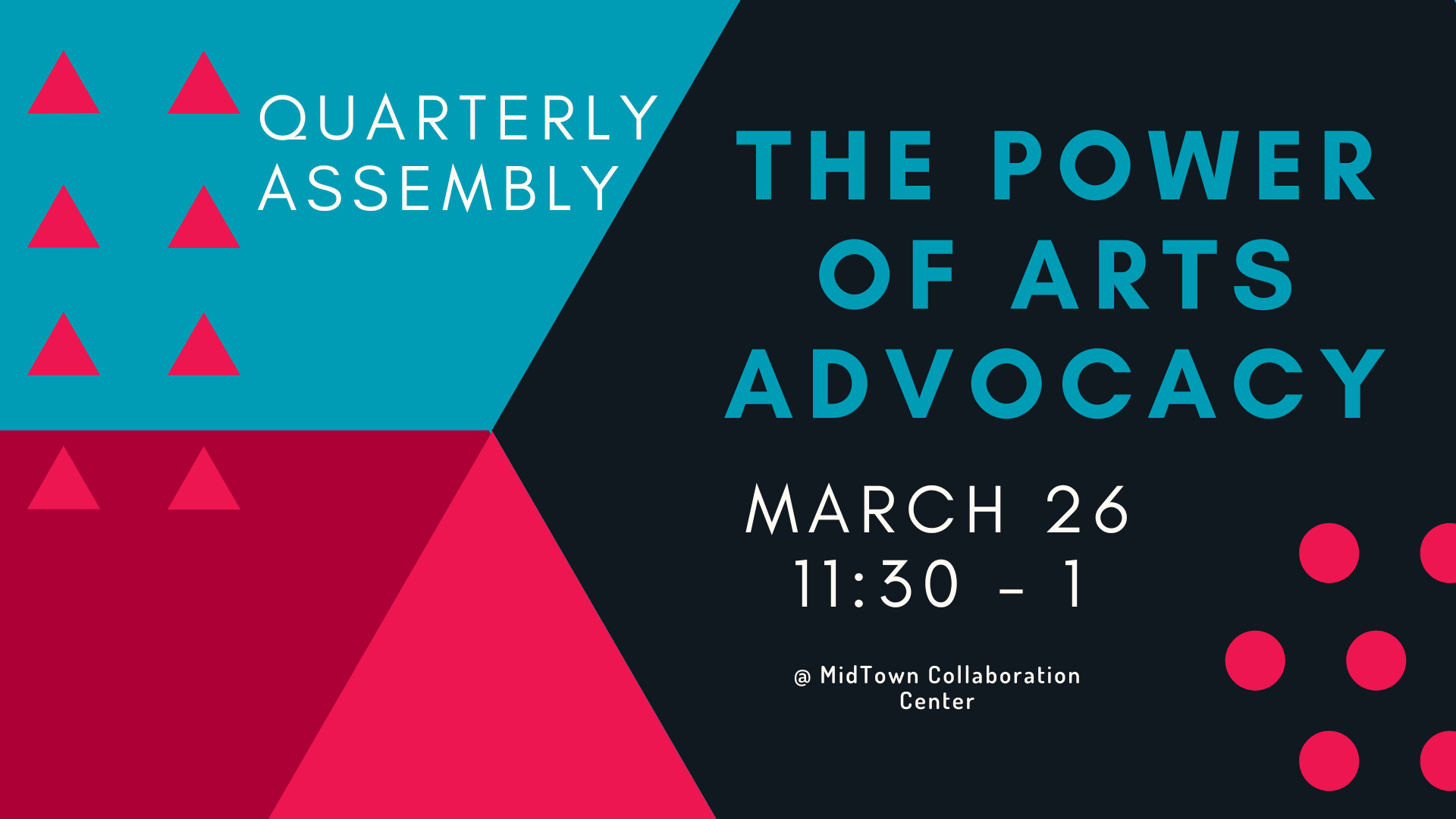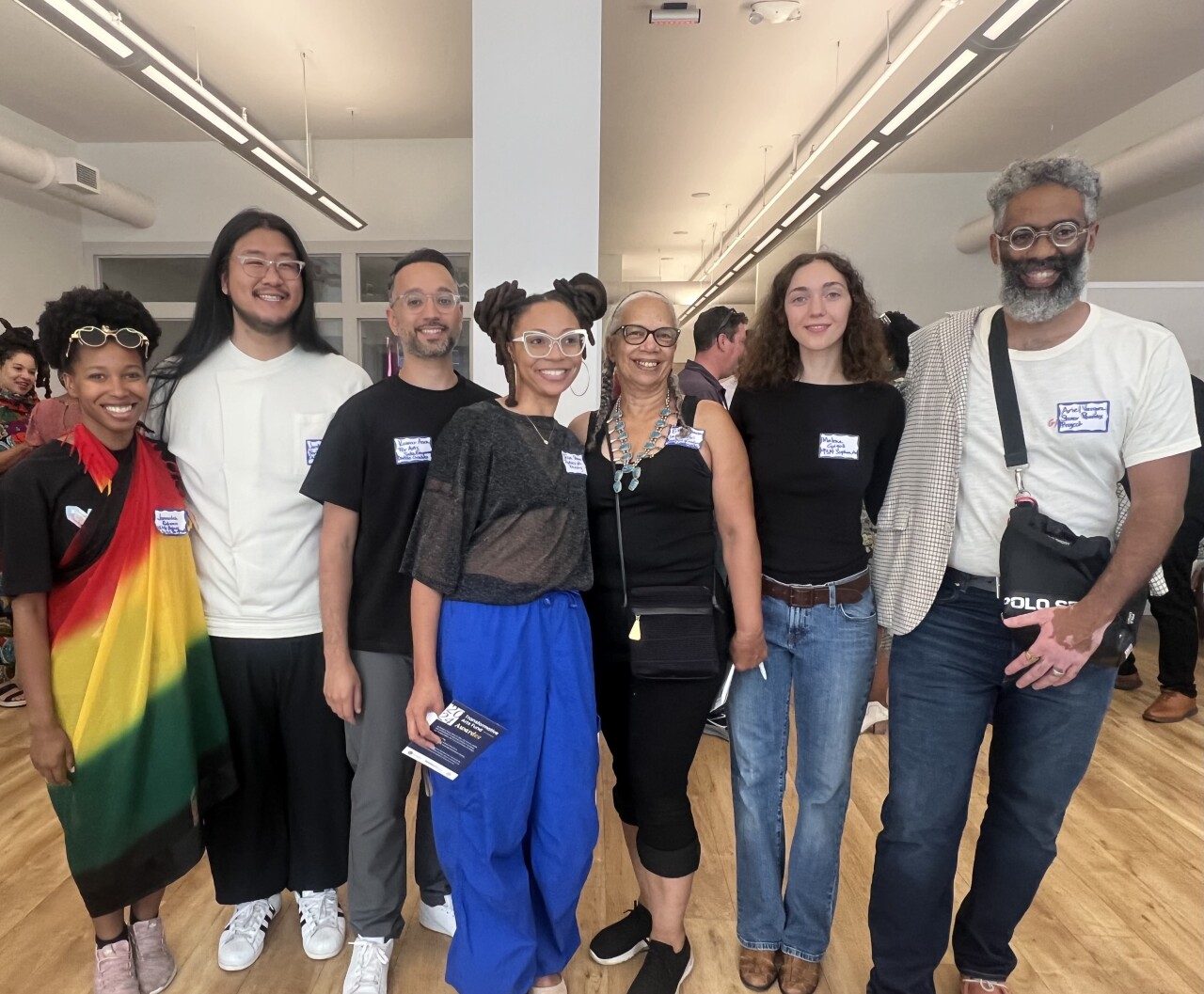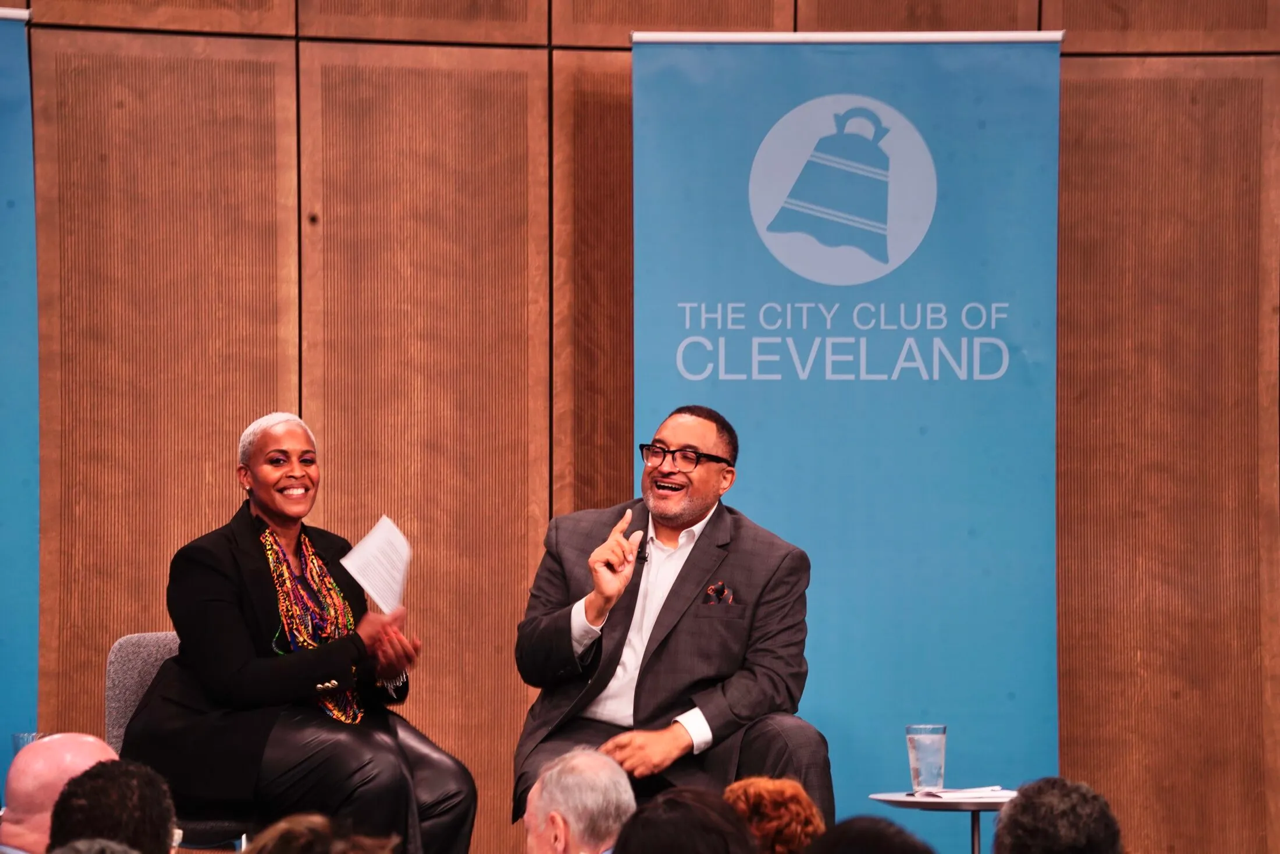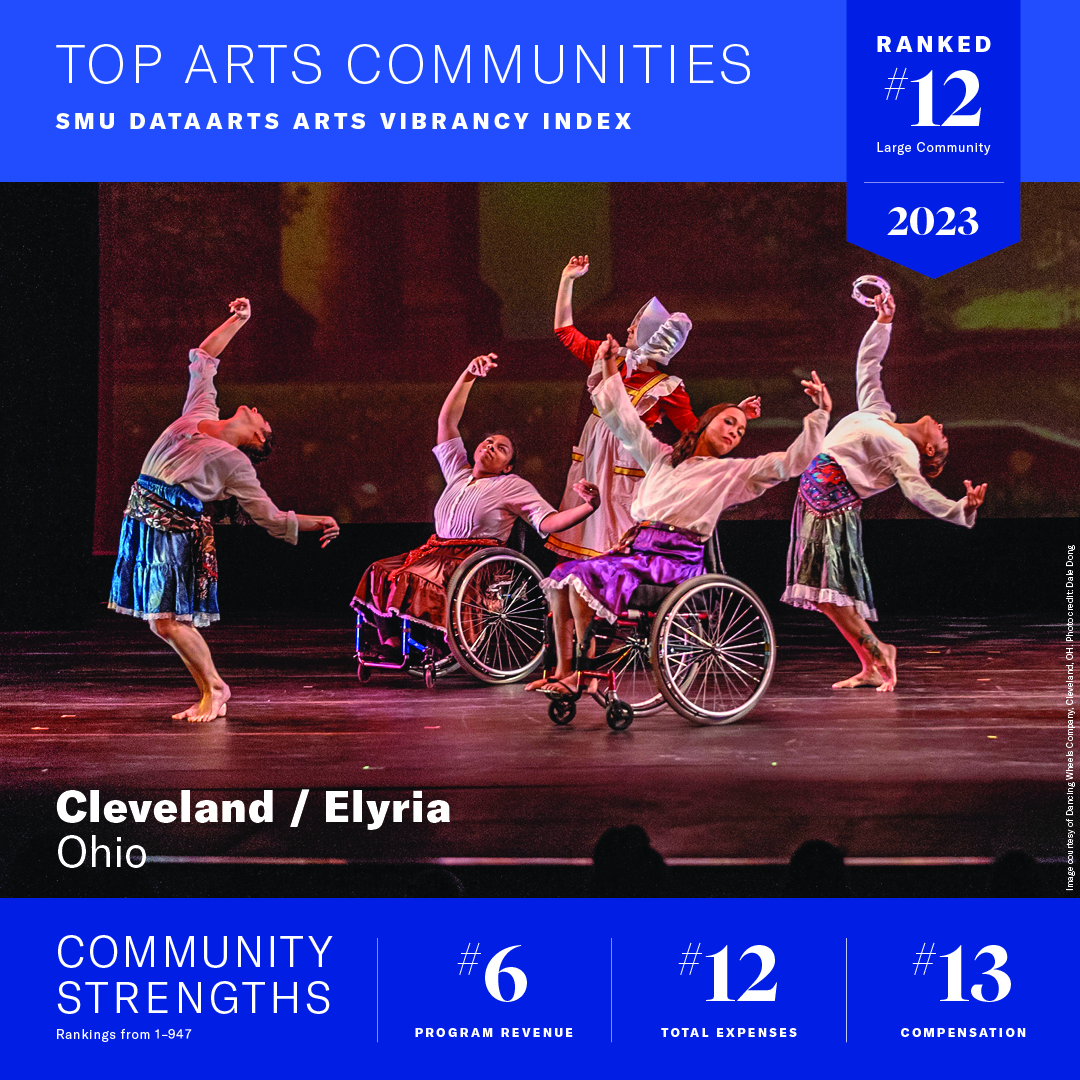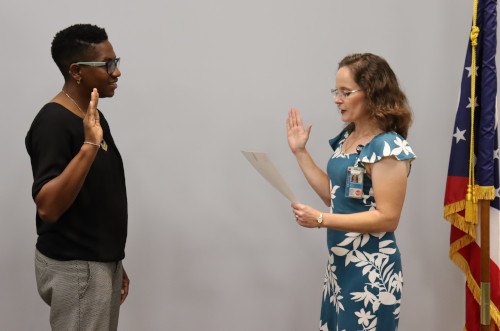Assembly: The Power of Arts Advocacy
What is arts advocacy, and how can we use it to strengthen Cleveland’s creative economy?
Attend a dialogue over lunch with Assembly for the Arts on March 26, 2025 at 11:30 to talk about exactly that.
Arts advocacy takes many forms. For some, it means securing more public and private funding for artists and cultural institutions. For others, it means using the power of creativity to drive community action and shape policies.
Join Assembly for the Arts on March 26 from 11:30 AM – 1:00 PM for an interactive conversation about the role of advocacy in the arts. This will be a discussion with you, artists, cultural leaders, and policy advocates to explore different approaches and share strategies.
The Top Arts and Culture Stories of 2024
Featured Image: Newly renovated Cleveland Museum of Natural History, Cleveland, OH, University Circle
THE TOP ARTS AND CULTURE STORIES OF 2024
By Jeremy Johnson
In 2024, Greater Cleveland’s arts and culture sector achieved historic milestones. Many were driven by the advocacy, policy and public support efforts of Assembly for the Arts, our partner organization Assembly for Action, and the hundreds of arts advocates who mobilize to bolster the arts community. For example, the victorious passage of Issue 55 will increase the amount of transformative funding for the non-profit arts sector for the next 10 years. It was overwhelmingly supported by more than 70% of Cuyahoga County voters. The region experienced significant economic impact from projects like the Rock Hall Induction Ceremony and the filming of the blockbuster Superman film. Support for individual artists soared because of increased funding and opportunities. Institutional philanthropy spurred major gifts and funded renovations, while national recognition spotlighted leading institutions, artists, and arts leaders. The sector also experienced organizational and personnel transitions, some welcome and others less so. Taken as a whole, Greater Cleveland’s arts and culture triumphed, demonstrating resiliency and momentum for the future. While not an exhaustive list, here are some of the most defining moments that captured the spirit and progress of the region’s creative scene in 2024.
ADVOCACY, POLICY AND PUBLIC SUPPORT.
Cuyahoga County voters approved Issue 55 in November with a decisive 71.2% majority, ensuring robust support for the region’s arts and culture sector. The measure replaces an existing cigarette tax benefiting 300 nonprofits. Assembly spearheaded the nonpartisan campaign, securing 200 endorsements from arts organizations, elected officials, clergy, and labor groups. Starting in 2026, the funds will flow to the arts community through grants administered by Cuyahoga Arts & Culture, a political subdivision of the state of Ohio.
The 2024 Capital Budget delivered a major boost to 17 Cuyahoga County arts and culture organizations, with over $16 million allocated to support expansions and other building projects. As part of the nearly $100 million statewide investment in arts and culture through House Bill 2, the funds went to theaters, museums, galleries and more. See the complete list at CreativeOhio. The investments underscore the transformative impact of state funding on the region’s creative economy.
The inaugural Greater Cleveland Music Census drew insights from 2,768 participants, shedding light on critical gaps in the region’s music ecosystem. Key findings pointed to a shortage of performance stages and a lack of support for venues operating outside the nonprofit sector. Respondents emphasized the need for mentorship, revenue development opportunities, and incentives for venues to spotlight local talent. Among proposed solutions were tax breaks and increased public arts funding aimed at bolstering Cleveland’s music economy and nurturing the broader creative sector.
Cleveland Heights received a $390,000 grant from the National Park Service’s Outdoor Recreation Legacy Partnership Program to enhance Cain Park’s outdoor arts and recreation facilities. Paired with over $2 million in ARPA funds, the project will include upgraded dressing rooms, modernized public restrooms, and state-of-the-art audio, visual, and lighting systems. The renovations promise a transformed experience for performers and audiences, solidifying Cain Park’s reputation as a premier destination for arts and culture in the region.
The Great Lakes Science Center (GLSC) received $250,000 in state funding to develop a water technology exhibit focused on preserving freshwater resources like Lake Erie. The initiative underscores Cleveland’s leadership in addressing environmental challenges and promoting sustainability. GLSC also collaborated with the Museum of Contemporary Art Cleveland (MoCA) and artist Andrea Bowers on “Lake Erie: Exist, Flourish, Evolve,” a monumental neon installation inspired by the Lake Erie Bill of Rights. Created with Cleveland artist David Helton — renowned for his iconic WMMS “The Buzzard” illustrations — and NavCour Glassware, the work urges viewers to reflect on their role in protecting the Great Lakes. Displayed at both GLSC and MoCA, the installation addressed the urgent need for environmental stewardship.
Cleveland Heights sought to balance its identity as a home for the arts amid community concerns and financial constraints. The planned closure of Coventry P.E.A.C.E. Park follows the Cleveland Heights-University Heights Library Board’s unanimous decision to end leases for over a dozen nonprofits at the former Coventry School, citing prohibitive repair costs. Many of the nonprofits have announced plans to relocate in 2025. In related news, Cleveland Heights City Council allocated $250,000 in ARPA funds to Heights Arts for a rebranding initiative aimed at unifying the Cedar-Lee District and strengthening its identity as the city’s cultural centerpiece.
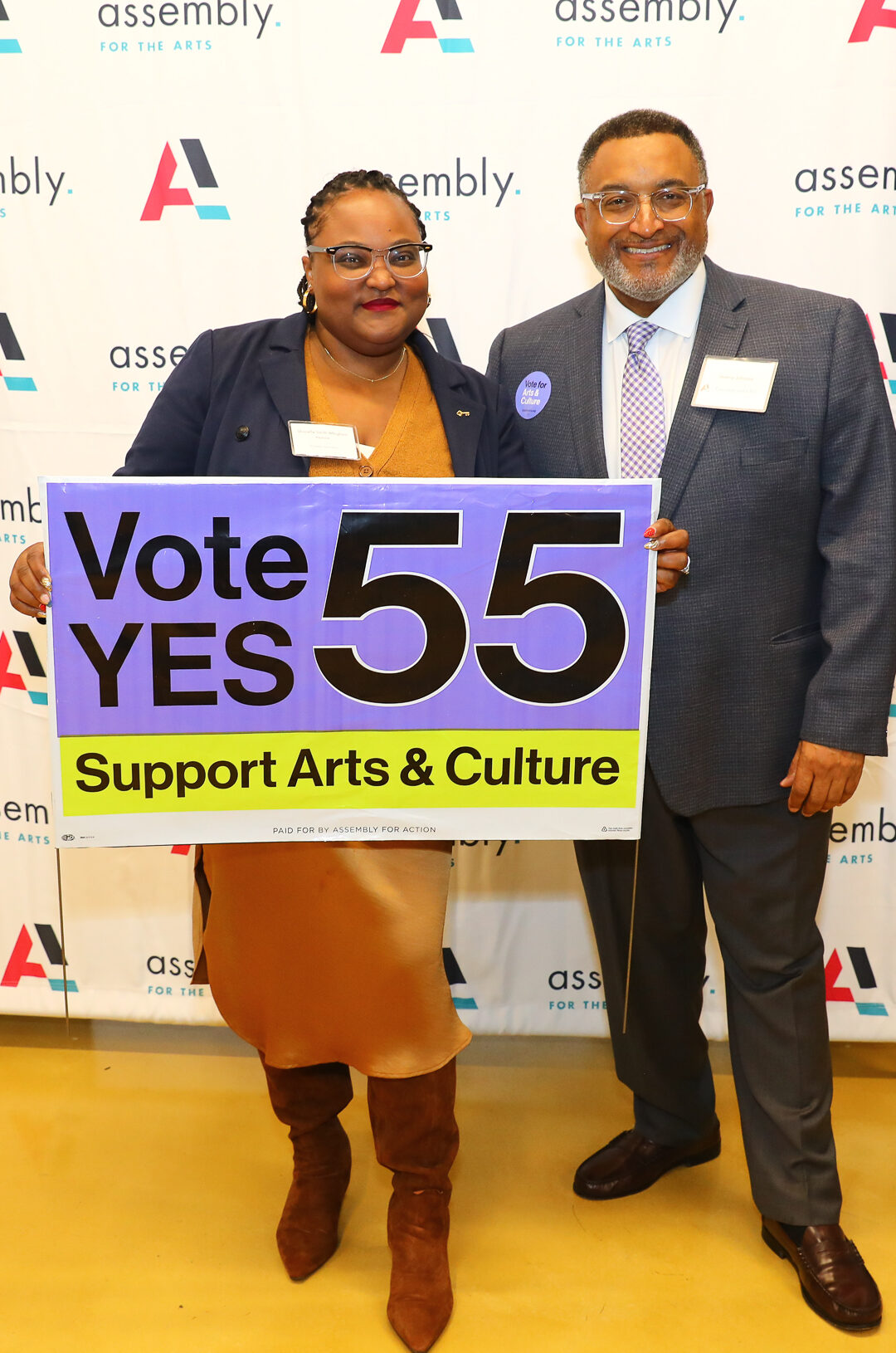
ECONOMIC IMPACT
Cleveland drew 200,000 visitors for a once-in-a-lifetime total solar eclipse, spurring a flurry of cultural events and generating astronomical results. According to Destination Cleveland, 12 eclipse-themed events infused $24.6 million into the local economy. Highlights included arts-focused watch parties at venues such as the Great Lakes Science Center, the Rock and Roll Hall of Fame, University Circle, the Cleveland Museum of Natural History, Music Box Supper Club, Children’s Museum of Cleveland, and Beck Center for the Arts. Performances ranged from The Cleveland Orchestra to Dancing Wheels and Papo Ruiz y La Dulzura de la Salsa, underscoring the city’s rich artistic diversity.
The Rock & Roll Hall of Fame launched a $150 million expansion to grow the museum’s footprint by 33%, from 155,000 to 205,000 square feet. The project includes a dramatic new wing inspired by the iconic I.M. Pei pyramid and a 41% larger Main Exhibit Hall. Funded through Cuyahoga County bonds and donor pledges, the expansion will also add Cleveland’s newest outdoor cultural space. The Rock Hall also hosted this year’s Induction Ceremony, an internationally celebrated event, honoring legends like Cher, Mary J. Blige, and Peter Frampton. The event drew millions of global viewers and generated $50 million in economic impact.
Playhouse Square, Cleveland’s renowned theater district, has expanded its footprint with the acquisition of two properties: the former Greyhound Bus Station and the adjacent Cleveland Institute of Electronics building. Plans are underway to transform the electronics building into a state-of-the-art rehearsal center, while the bus station will be repurposed as a versatile performance and arts venue. The envisioned space could host cabaret, music, and other performances, offering a vibrant blend of dining, entertainment, and nightlife.
Cleveland transformed into Metropolis this summer as the latest Superman blockbuster was filmed in the city’s downtown streets. Producers spent an estimated $37 million in Ohio, bolstered by $11 million from the Ohio Motion Picture Tax Credit. The production generated significant local economic impact, including thousands of hotel room bookings, partnerships with local vendors, and job opportunities for regional crew members and background actors.
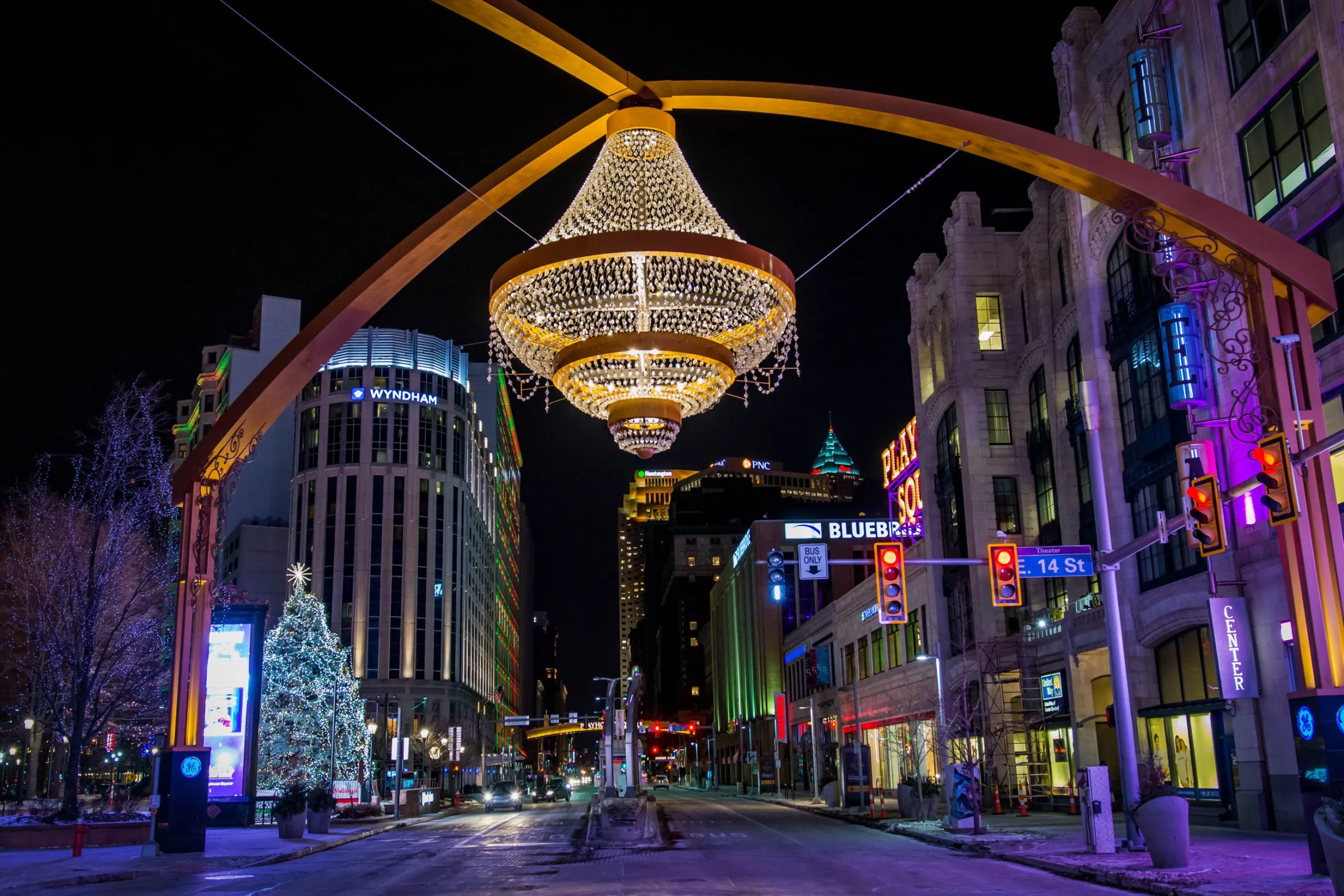
SUPPORT FOR INDIVIDUAL ARTISTS
Cleveland Mayor Justin Bibb and Rhonda Brown, the City of Cleveland’s Senior Chief Strategist for Arts, Culture, and the Creative Economy, announced the recipients of the $3 million ARPA-funded Transformative Arts Fund. The seven artists will collaborate with institutions such as hospitals, housing authorities, and schools to deliver cutting-edge public art installations across the city.
Assembly for the Arts distributed $170,000 through its 2024 Creative Impact Fund, supported by Cuyahoga Arts & Culture. Seventeen artists each received $10,000 in unrestricted funding to bolster their creative practices and strengthen connections within the Cleveland community. In its second year, the fund increased its grant awards by 60%, up from $6,250 per artist in 2023, making it one of the largest unrestricted grant opportunities for artists in the region. The program will continue in 2025 with some key changes to reach more artists with more funding opportunities.
The Cleveland Arts Prize (CAP) celebrated its 2024 recipients, awarding $36,000 across multiple categories. Prizes included $10,000 for Emerging Artist, Mid-Career, and Lifetime Achievement winners, along with special honors such as the Robert Bergman Prize, Martha Joseph Prize, and Barbara Robinson Prize. CAP also relaunched its Verge Fellowship, granting $2,000 each to five emerging artists.
Cleveland City Hall took on a new role as a gallery for regional talent under the leadership of Rhonda Brown, the city’s top arts official. Brown curated two exhibits in the Beaux Arts-style building: Discover the Promise: Impact, Legacy and Perspective,” co-created with Artists Archives of the Western Reserve, and “La Promesa: Celebrating Legacy, Empowering Generations, Inspiring the Future of Hispanic-Latino, a partnership with the Julia de Burgos Cultural Arts Center.
Brown also elevated Cleveland’s presence on the national arts scene, helping eight local artists — five of them from the Cleveland Institute of Art — secure spots at the Prizm Art Fair during Miami Art Week. Collaborating with Prizm founder Mikhaile Solomon, Assembly’s Chief Community Officer Deidre McPherson and local partners including CIA, Cleveland Museum of Art, and area philanthropies, Brown ensured Cleveland artists shine on a global stage.
The Cleveland International Piano Competition (CIPC) marked its 50th anniversary in 2024 with an extraordinary display of talent. Chinese pianist Zijian Wei, 25, claimed the $75,000 Mixon First Prize, along with multiple special honors, including the ChamberFest Cleveland Prize, Concerto Round Audience Prize, Junior Jury Prize, and the G. Henle Verlag Urtext Prize. The competition drew 265 applicants from 28 countries, with 16 finalists competing live in Cleveland. As a cornerstone event in the global classical music calendar, CIPC continues to elevate the careers of its laureates and inspire audiences worldwide.
The Western Reserve Historical Society’s Cleveland History Center opened its African American History Gallery, debuting with the exhibit History in Their Hands: Black Photographers in Cleveland, Ohio 1968–Present. Organized by Center historian Dr. Regennia Williams, the exhibit highlights the work of local Black photographers who have documented Cleveland’s history over the past five decades. The gallery aims to showcase African American contributions to the city’s rich history and culture.
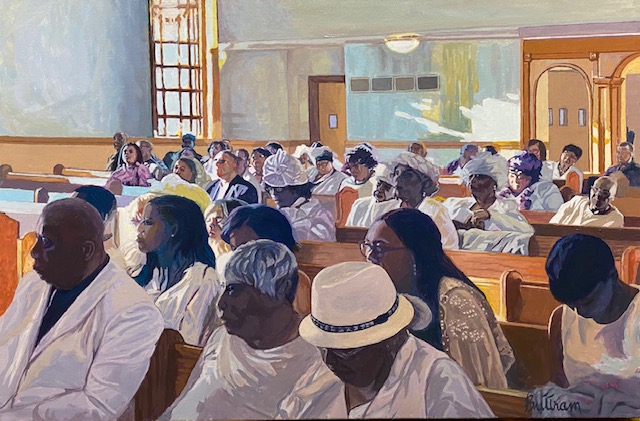
INSTITUTIONAL PHILANTHROPY
The Cleveland Museum of Natural History unveiled a $150 million dollar, 375,000 square foot renovation project. Completed after three-and-a-half years, the massive re-do includes classic dinosaur fossils and interactive experiences, dominated by a larger, light-filled Visitor Hall that is free and open to the public.
A $25 million challenge gift from Kelvin and Eleanor Smith Foundation spurred additional donors to support physical and organizational enhancements for the Cleveland Museum of Art. Visitors to the museum, including 100,000 school children each year, will find renovated arrival spaces, exhibition programs, development of the museum’s grounds and adjacent fine arts park. The gifts will also support curatorial, conservator and management positions.
The Cleveland Institute of Music (CIM) marked a pivotal year in 2024, surpassing $50 million in its Second Century Campaign. A transformative $5 million gift from Kevin and Kristen Stein and Family supported the renovation of Kulas Hall, set to reopen in fall 2025, and expanded endowed scholarships. The year also saw CIM faculty vote to unionize as the institution reaffirmed a commitment to sustain its long history of excellence in music education and artistic achievement.
Karamu House, the nation’s oldest Black producing theatre, was designated an affiliate company of Playhouse Square. The partnership will foster deeper creative collaborations between the two institutions. Karamu will continue operations at its historic Fairfax neighborhood location while expanding its presence through performances at Playhouse Square venues. Additionally, Karamu House has completed a $5.2 million renovation of its theatre wing, enhancing its facilities to better serve the community and support its mission of producing socially relevant theatre.
The Cleveland Orchestra’s endowment surged nearly 11% to $296 million, bolstered by a $4.6 million gift from Jim and Myrna Spira. Attendance rebounded to 254,000 across 106 performances, marking a strong recovery after the pandemic. With six consecutive years of balanced budgets, the Orchestra is on a path to sustained financial health and cultural prominence.

NATIONAL RECOGNITION
Cleveland City Councilman Kevin Conwell was awarded the Public Leadership in the Arts Award for City Council Members by the National League of Cities and Americans for the Arts. A dedicated arts advocate and percussionist, Conwell co-sponsored legislation establishing Cleveland’s first Senior Strategist for Arts, Culture, and Creative Economy, as well as the $3 million Transformative Arts Fund, which supports artist-led community projects with ARPA funds. He also launched the Play It Forward Cleveland! program, which provides musical instruments to underserved children.
Cleveland Public Theatre (CPT) received a $500,000 grant from the Mellon Foundation to support its innovative programming and commitment to fostering diverse voices. The funding is part of a national initiative to empower theaters that prioritize historically marginalized artists and audiences. Over the next two years, CPT will use the grant to deepen its community connections, develop new works, and explore bold approaches to artistic production and audience engagement. This grant underscores CPT’s role as a leader in advancing cultural equity and groundbreaking theater in Cleveland.
The Sculpture Center earned a prestigious $100,000 residency prize from the Chicago-based Joyce Foundation, a significant honor for the Cleveland organization. The grant will bring Puerto Rican-born artist Edra Soto to collaborate with Near West Side communities, creating a public art installation reflecting the neighborhood’s unique identity.

LEADERSHIP TRANSITIONS
After 25 years of groundbreaking performances, GroundWorks DanceTheater, founded by David Shimotakahara, took its final bow this summer with a farewell performance at Cain Park. Known for its innovative repertoire, the company commissioned over 40 new works from nationally renowned choreographers and embraced collaborations with musicians, visual artists, and filmmakers. Under Shimotakahara’s visionary leadership, GroundWorks pushed the boundaries of contemporary dance, making a lasting impact on Cleveland’s arts scene.
The Cleveland Orchestra announced that Music Director Franz Welser-Möst will step down in 2027, ending a transformative 25-year chapter in its history.
Cleveland International Film Festival named Hermione Malone of New Orleans as Executive Director. Malone is originally from Detroit.
SPACES hired Fanna Gebreyes as its new Director, coinciding with the gallery’s 50th A Detroit native, Gebreyes led arts institutions in the DC area.
Cuyahoga Arts & Culture welcomed Leonard DiCosimo and Gina Vernaci to its board. The arts leaders were appointed by County Executive Chris Ronayne.
Cleveland Ballet named Larry Goodman as President and CEO and Timour Bourtasenkov as Artistic Director.
Beck Center for the Arts announced longtime staffer Ed Gallagher will become its new President and CEO, replacing Cindy Einhouse on her retirement.
Great Lakes Theater named Brian Barasch as Executive Director. Barasch spent two decades in Chicago and is from Cincinnati.
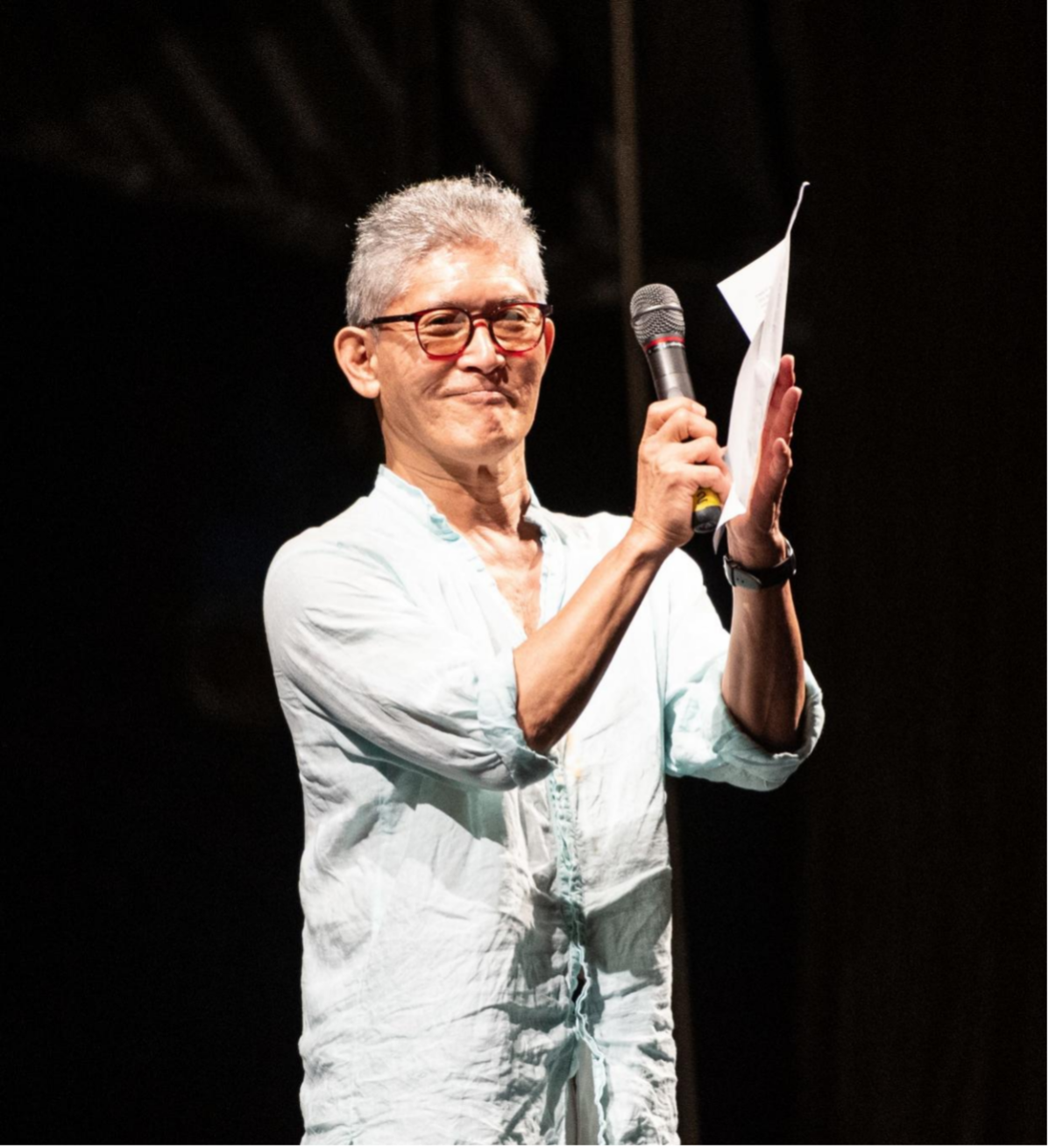
Cleveland Artists Represent the Region at the 2024 Miami Art Week
The City of Cleveland’s Arts, Culture, and Creative Economy Department is proud to collaborate with the Prizm Art Fair, held December 3 through December 8
Cleveland – November 26, 2024 – Continuing its commitment to bolstering Cleveland’s artistic community, the City of Cleveland is proud to support eight local artists—spanning mid-career, seasoned, and emerging talents—participating in the prestigious Prizm Art Fair during Miami Art Week, one of the premier events in the global contemporary art scene.
This exceptional opportunity provides Cleveland’s artists with invaluable exposure to national and international collectors, curators, and institutions, further cementing the city’s reputation as a hub for artistic innovation.
Bibb Administration Launches Transformative Arts Fund, Nearly $3 Million in Grants Now Available to Local Artists
Between 6 to 12 Cleveland-Centric Projects Will Receive Awards Ranging from $250,000 to $500,000
Wednesday, January 31, 2024 — Cleveland — Mayor Justin M. Bibb announced nearly $3 million is now available for local artists through the City’s Transformative Arts Fund (TAF) grant program. The program will provide funding for projects and initiatives led by Cleveland-based artists. The application portal opened today and those who are interested have until 11:59 p.m. on Saturday, March 30 to apply.
“Our local creative community provides the heartbeat that keeps our neighborhoods vibrant and alive – they inspire our children, bring difficult societal challenges to light, and empower us to take action,” said Mayor Bibb. “This transformative-level of funding we will be providing is designed to award artists who propose projects that will have a sustained, positive impact in the community long after they are completed.”
'It's gonna create an art renaissance': CLE artists awarded $3M to create public art projects in neighborhoods
Source: News5
Date: July 18, 2024
Abstract:
The City of Cleveland says the grant program will support artists who partner with institutional partners to create art that reflects the diversity and richness of the city.
CLEVELAND — Wednesday, the City of Cleveland announced funding for seven public art and place-making projects to bolster artists and strengthen neighborhoods. At that time, Rhonda K. Brown, the city’s senior strategist for arts, culture and the creative economy, said, “it’s an opportunity for artist to partner with corporations, schools and any public/private entity.”
Embracing the Power of Art: A Call for Change
Source: The Cleveland Observer, Vince Robinson
Date: April 19, 2024
Abstract: In a recent gathering hosted by the City Club of Cleveland, titled “The Changing Landscape of Arts and Culture in Northeast Ohio,” Rhonda Brown, Chief Strategist for Arts, Culture, and the Creative Economy, led a thought-provoking discussion alongside Jeremy Johnson, President and CEO of the Assembly for the Arts. This nonprofit organization, dedicated to advocating for and researching the arts, plays a crucial role in supporting artists, nonprofits, and creative businesses in Cuyahoga County.
Johnson highlighted a striking statistic from an economic impact study by Americans for the Arts: in 2022, Cuyahoga County’s nonprofit arts and culture sector generated over $533 million in economic activity. Despite the challenges posed by the pandemic, Johnson emphasized the resilience of the industry and the urgent need to sustain its momentum.
Leadership in Action
Source: Cleveland Magazine
Date: March 21, 2024
Abstract: Discover what it means to be a leader — and what issues they face — in Cleveland in 2024. By Jill Sell
Superman can lift cars over his head, bounce bullets off his chest and crush coal into diamonds with his hands. He’s capable of freezing people with his breath and melting objects with heat beams from his eyes. If the occasion warrants it, the superhero can even alter the orbit of the planets…
…
Cleveland’s arts and culture scene historically has been the envy of many other cities. In addition to the priceless contributions to education, creativity and the nourishment of our souls, the economic boost the region receives from museums, concerts, theater, etc., is impressive. According to the City of Cleveland Planning Commission, “the arts contribute more than $1.3 billion annually to the regional economy.”
“Cleveland also has one of the most publicly and privately supported arts communities in the country,” says Jeremy Johnson, who has been president and CEO of Assembly for the Arts, a regional arts council, since 2021.
Bibb Administration Launches Transformative Arts Fund, Nearly $3 Million in Grants Now Available to Local Artists
Source: Clevelandohio.gov
Date: Wednesday, Jan 31, 2024
Abstract:
Between 6 to 12 Cleveland-Centric Projects Will Receive Awards Ranging from $250,000 to $500,000
Wednesday, January 31, 2024 — Cleveland — Mayor Justin M. Bibb announced nearly $3 million is now available for local artists through the City’s Transformative Arts Fund (TAF) grant program. The program will provide funding for projects and initiatives led by Cleveland-based artists. The application portal opened today and those who are interested have until 11:59 p.m. on Saturday, March 30 to apply.
“Our local creative community provides the heartbeat that keeps our neighborhoods vibrant and alive – they inspire our children, bring difficult societal challenges to light, and empower us to take action,” said Mayor Bibb. “This transformative-level of funding we will be providing is designed to award artists who propose projects that will have a sustained, positive impact in the community long after they are completed.”
The TAF is dedicated to empower artists, creators, and communities to collaborate and create art that reflects the diversity and richness of Cleveland. Grant amounts will range from $250,000 to $500,000 – meaning that at least 6 and up to 12 projects will be awarded. The application must be completed by the lead artist(s), with a commitment from a partnering institution who will provide organizational support and administrative assistance for the project. As a Cleveland-centric program, the following criteria must be met in order to be eligible to receive an award:
· The lead artist must be 18+ years old and live in the City of Cleveland
· The partnering institution must be located in the City of Cleveland
· The proposed project must be based in the City of Cleveland
Artists across the various types of creative disciplines – painting, music, film, culinary, fashion, and others – are all encouraged to apply. Applicants can collaborate with any institutional partner – which could include community development corporations, social service agencies, nonprofits, schools, religious groups, or private businesses. Special consideration will be given to project proposals that amplify/address vacant land reutilization, the environment, food insecurity, violence prevention, safe spaces in the city, social determinants of health, and matters of diversity, equity, and inclusion. Applicants will be required to provide work samples, a detailed budget, an institutional partner letter of commitment, and other documentation when submitting the application.
“Arts is all about nurturing creativity, and innovation while providing entertainment outlets for people of all ages. As a child, I played instruments for hours after school. This sparked a creative fire in me and kept me out of trouble,” stated Councilman Kevin Conwell. The arts are a catalyst for innovation, pushing boundaries, and challenging the status quo. This is a big deal for Cleveland. It’s cool beans that we were able to get this up!”
Those who are interested in learning more about the eligibility requirements, necessary documentation, application process, and overall program can find additional information on the TAF webpage.
CLEVELAND-ELYRIA RANKED 12th AMONG 20 MOST ARTS-VIBRANT LARGE COMMUNITIES IN THE NATION
The 8th Annual Arts Vibrancy Index from SMU DataArts Compiles List of 40 Most Vibrant Arts Communities Across the U.S., Based on Measures of Per Capita Supply, Demand and Government Support for the Arts

CLEVELAND, OH, November 13, 2023 – SMU DataArts, the National Center for Arts Research, released its 8th Arts Vibrancy Index, which identifies Cleveland-Elyria as number 12 in the list of 20 large communities in the United States through an analysis of the level of supply, demand, and government support for the arts in more than 900 communities across the country. Organized into three separate lists based on community population size, totaling 40 communities across the country, this year’s Arts Vibrancy Index is the first to include numerical rankings since 2020, a reflection of arts organizations returning to in-person activities and performances following the easing of pandemic restrictions. Cleveland, along with neighboring Elyria, has consistently appeared on the Arts Vibrancy Index since its debut on the rankings in 2018.
This year, Cleveland is ranked 12th on the annual list of large communities in the nation -- the highest ranking it has ever achieved.
Related research by SMU DataArts shows that Local Arts Agencies (LAAs) like Assembly for the Arts and Cuyahoga Arts & Culture are powerful catalysts of arts vibrancy which ensure that the arts remain an integral part of community life. Fluctuations in a community’s ranking occur from year to year for a variety of reasons, including the opening of an arts district or closing of a performance space as well as local economic conditions.
Cuyahoga Arts & Culture (CAC) is the region’s largest funder for arts and culture. Since 2006, CAC has invested $230 million in over 470 organizations, including SMU Data Arts, to gather and share local nonprofit arts data through CAC’s grant application process.
“It’s important to have data to demonstrate the strength of Cuyahoga County’s creative community,” said Jill M. Paulsen, executive director of Cuyahoga Arts & Culture. “Each year, CAC-funded organizations contribute information to SMU DataArts to help us tell the story of the sector’s impact and shine a light on their work.”
Jeremy V. Johnson, CEO and president of Assembly for the Arts, said, “Cleveland is now ranked 12th in the nation in terms of Arts Providers, Arts Dollars, and Government Support, joining the company of arts-heavy cities such as New York City, San Francisco, Washington, D.C., and Philadelphia. The Arts Vibrancy Index demonstrates the arts’ enduring importance, resiliency, and vibrancy in Greater Cleveland, which is why it’s essential to maintain public support for this important part of our economy.”
Arts-vibrant communities can be found in every region of the United States—a finding which arises from an objective analysis of the data, and not from selecting communities by hand to achieve geographic representation.
“The arts and culture sector was hit hard by the pandemic, and some organizations and communities are still recovering. The Index is an opportunity for communities to affirm and celebrate the individuals and organizations that are the sources of arts vibrancy in their region, whether that’s artists who have mastered a local craft tradition over generations, a cultural festival that families enjoy year after year, or a cherished historic theater, museum, or arts-education center. For organizations, funders, local citizens, and public officials, the Arts Vibrancy Index is a powerful resource that leverages data-driven evidence to illuminate how the arts contribute to an area’s economy and public life,” stated Dr. Zannie Voss, Director of SMU DataArts. “One way that public leaders can spark arts vibrancy in their communities is by expanding funding for local arts agencies, which spurs arts employment, stimulates more artistic activity, and increases the strength of geographically dispersed arts-vibrant cultural resources throughout communities.”
The Lists
In addition to the top arts-vibrant communities listed in the Arts Vibrancy Index, arts-vibrancy scores for every county in the United States can be viewed on an interactive map that identifies arts and cultural strengths that are present in every community. (Also known as Metropolitan or Micropolitan Statistical Areas, these communities have boundaries that are defined by the United States Census Bureau.)
Large Communities (population: 1 million +)
On the list of the most arts-vibrant communities with populations of 1 million or more, one city is new to the list: Milwaukee-Waukesha, WI. San Francisco-San Mateo-Redwood City, CA, sits at the top of the list for the first time since 2018 and Philadelphia, PA, has moved into the top 5 for the first time ever. After debuting in the 20th spot in 2020, Cincinnati, OH-KY-IN, has skyrocketed to the 11th spot.
- San Francisco-San Mateo-Redwood City, CA
- New York-Jersey City-White Plains, NY-NJ
- Washington-Arlington-Alexandria, DC-VA-MD-WV
- Boston, MA
- Philadelphia, PA
- Minneapolis-St. Paul-Bloomington, MN-WI
- Frederick-Gaithersburg-Rockville, MD
- Nashville-Davidson-Murfreesboro-Franklin, TN
- Los Angeles-Long Beach-Glendale, CA
- New Orleans-Metairie, LA
- Cincinnati, OH-KY-IN
- Cleveland-Elyria, OH
- Cambridge-Newton-Framingham, MA
- Denver-Aurora-Lakewood, CO
- Pittsburgh, PA
- Portland-Vancouver-Hillsboro, OR-WA
- Seattle-Bellevue-Kent, WA
- Milwaukee-Waukesha, WI
- Chicago-Naperville-Evanston, IL
- St. Louis, MO-IL
Medium Communities (population: 100,000 – 1 million)
Medium communities are home to populations ranging from 100,000 to 1 million people. Canton-Massillon, OH, is new to this list, while Santa Fe, NM; San Rafael, CA; and Pittsfield, MA, have appeared on the list of top medium communities every year since 2015. Ann Arbor and Kalamazoo-Portage, MI, are returning to this list following their 2022 debuts.
- Pittsfield, MA
- Santa Fe, NM
- Ithaca, NY
- San Rafael, CA
- Kalamazoo-Portage, MI
- Boulder, CO
- Missoula, MT
- Canton-Massillon, OH
- Burlington-South Burlington, VT
- Ann Arbor, MI
Small Communities (population <100,000)
Small communities are defined as areas with populations under 100,000. Jackson, WY-ID, and Bennington, VT, have made the list of small communities every year since 2015, with Jackson maintaining its ranking as first among small communities for the past four years.
- Jackson, WY-ID
- Brevard, NC
- Steamboat Springs, CO
- Bennington, VT
- Easton, MD
- Glenwood Springs, CO
- Hailey, ID
- Juneau, AK
- Brookings, SD
- Oneonta, NY
The overall Arts Vibrancy Index is composed of 13 unique measures which cover aspects of supply, demand, and public support for arts and culture, and are adjusted for cost of living and population differences among communities. In this year’s index, the analysis approach was updated to weight the 13 inputs based on their relative explanatory power for the underlying concept of arts vibrancy. This approach improves measurement consistency in the face of data availability delays or other changes in individual datasets from year to year. All financial metrics have been adjusted for cost of living in order to level the playing field. The cost of doing business varies based on local conditions, so the same dollar goes further in some communities than others.
ABOUT ASSEMBLY FOR THE ARTS
Assembly for the Arts is a 501(c)3 nonprofit organization with a focus on advocacy, cultural policy, racial equity initiatives, research, marketing that elevates the region, and services for nonprofits, artists, and creative businesses. It is governed by a volunteer board with a strong commitment to diversity and inclusion. Assembly by design operates in close partnership with Cuyahoga Arts & Culture, a government agency, and Assembly for Action, a 501(c)4 political action nonprofit to serve the entire creative sector. Assembly is supported through major funding from: The Cleveland Foundation, The George Gund Foundation, The Char and Chuck Fowler Family Foundation, Cuyahoga Arts & Culture, Ohio Arts Council, Huntington, KeyBank, The George W. Codrington Charitable Foundation, and Fred & Laura Ruth Bidwell. www.assemblycle.org
ABOUT CUYAHOGA ARTS & CULTURE
Cuyahoga Arts & Culture (CAC) is the region’s largest funder for arts and culture, helping hundreds of organizations in Cuyahoga County connect millions of people to cultural experiences each year. Since 2006, CAC has invested $230 million in over 470 organizations, making our community a more vibrant place to live, work and play. CAC is a separate government entity and a political subdivision of the State of Ohio. For more information, visit cacgrants.org.
ABOUT SMU DATAARTS
SMU DataArts, the National Center for Arts Research, is a project of the Meadows School of the Arts at Southern Methodist University. The mission of SMU DataArts is to provide and engage both organizations and individuals with the evidence-based insights needed to collectively build strong, vibrant, and equitable arts communities. Its research efforts range from academic papers published in leading journals, applied research undertaken with community partners, and actionable insights shared directly with arts practitioners. Its programs provide business intelligence tools and resources to help arts leaders leverage data to answer critical management questions and connect research analyses to their own work. Recent publications include research reports on emergence from the COVID-19 crisis; the alchemy that drives high performing arts organizations of color; audience diversity, equity and inclusion in large performing arts organizations; impact of investments made in diverse creative communities; and more.
###
Media Contacts:
Malissa Bodmann
216-536-7517
Two New Members Added to GCRTA Board of Trustees
Source: Greater Cleveland Regional Transit Authority (RTA)
Date: October 17, 2023
Abstract:
Cleveland, OH – The Greater Cleveland Regional Transit Authority (GCRTA) welcomed Deidre McPherson and Stephen Love as new members to their Board of Trustees during today’s Board meeting inside GCRTA’s Main Office Building at 1240 W. 6th Street, Cleveland, Ohio 44113.
Trustee McPherson was sworn into service on Wednesday, October 4, 2023, and Trustee Love was sworn into service before the start of today’s Board Meeting, by Anna Hlavacs, GCRTA Senior Counsel Contracts, Real Estate and Administrative Law in preparation for their first official call to service on October 17, 2023. Their appointments were made by Cuyahoga County Executive Chris Ronayne, with Trustee McPherson serving an unexpired term ending in March 2024, and Trustee Love serving a term ending in March 2026.
“GCRTA welcomes the appointments of Deidre McPherson and Stephen Love to our Board of Trustees. We agree that their professional expertise and dedication to arts and culture, and the environment will be beneficial as we continue to enhance public transportation’s impact on the social economics of our community,” said GCRTA General Manager and Chief Executive Officer India L. Birdsong Terry.

